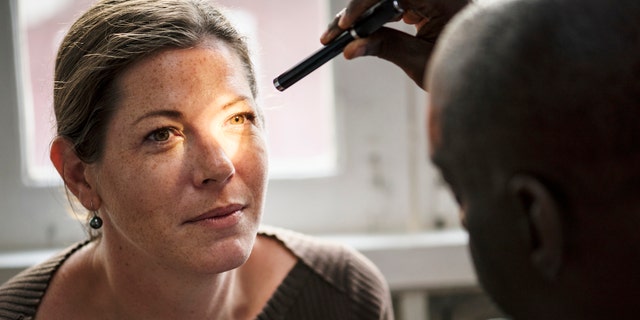Anyone who’s ever been plagued with pink eye — and its telltale signs of irritation, itchiness and discharge — likely will want to take measures to prevent it from happening again.
Also known as conjunctivitis, the infection causes the white of the eye to become pink or red, hence its more familiar name.
As many as six million children and adults contract pink eye each year, according to Cleveland Clinic.
To help you recognize the symptoms and prevent spreading, Dr. James Kelly, M.D., of the Kelly Vision Center in New York City, shared expert tips and insights with Fox News Digital.
POPULAR CONTACT LENSES COULD CONTAIN TOXIC ‘FOREVER CHEMICALS,’ NEW STUDY FINDS
“The three main types of pink eye are viral, allergic and bacterial in nature,” Kelly explained. “The most common cause is a virus known as adenovirus, although it may also be caused by certain types of bacteria and fungi.”
Molds, pollen and other allergens can also trigger the infection, Cleveland Clinic states on its website.
In some less common cases, pink eye can stem from a foreign object in the eye, external irritants, autoimmune diseases or blocked tear ducts, per Cleveland Clinic.
“It is more common in children and teens, especially during the summer, as they are in camps, day care or spending time together at pools,” Kelly said.
Watch for these symptoms
“Typical symptoms of pink eye include redness, swelling, tearing, discharge, crusting and burning,” Kelly told Fox News Digital.
Some people may also experience blurry vision, increased sensitivity to light and itchiness.
BE WELL: GET REGULAR EYE EXAMS TO PROTECT VISION AND CATCH WARNING SIGNS EARLY
“Most pink eye resolves without treatment or permanent damage, usually within a few days,” the doctor said. “For some, however, it may take two to three weeks to fully resolve.”
If left untreated, pink eye can sometimes result in permanent scar tissue, Kelly warned. To avoid this and to eliminate symptoms faster, he suggests seeking medical care.
Know the treatment of pink eye
Medicated eyedrops — specifically artificial tears and antibiotics — are the mainstay of treatment for pink eye, Kelly said.
“Occasionally, steroid eye drops are prescribed depending on the clinical features the individual may have upon presentation to the eye doctor,” he also said.

Bacterial pink eye is treated with antibiotic eyedrops, pills or creams.
Pink eye caused by a virus doesn’t respond to antibiotics. Cases caused by allergies can be treated with over-the-counter or prescription eyedrops.
A health care provider can determine what type of conjunctivitis is causing the symptoms.
Prevent the spread
Pink eye is very contagious — it can easily be transmitted from person to person.
Proper hygiene is critical to preventing the spread and relapse of the infection, Kelly said.
Bacterial conjunctivitis is contagious from the point when symptoms appear until 24 to 48 hours after beginning antibiotics, according to Cleveland Clinic.
CLICK HERE TO SIGN UP FOR OUR HEALTH NEWSLETTER
Viral pink eye can be transmitted for the entire duration of symptoms, or even before they begin.
Pink eye that’s caused by allergies is not contagious.

“Sharing personal items like pillowcases, towels and makeup can result in the spread of the underlying infectious cause, so it is strongly advisable not to do so,” Kelly said.
Viruses and bacteria can live on surfaces for hours to days, he warned, so it is best to limit contact with others while infected with pink eye.
Proper hand-washing is also very important in controlling spread, especially after applying eye drops or ointment.
“Certain people are more susceptible, especially those who are contact lens users or who have weakened immune systems,” Kelly said.
To read more pieces in Fox News Digital’s “Be Well” series, click here.
Read the full article here